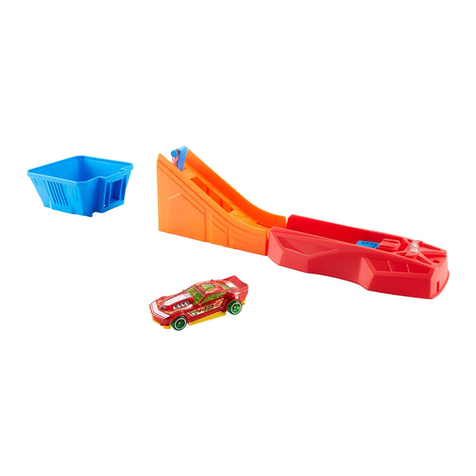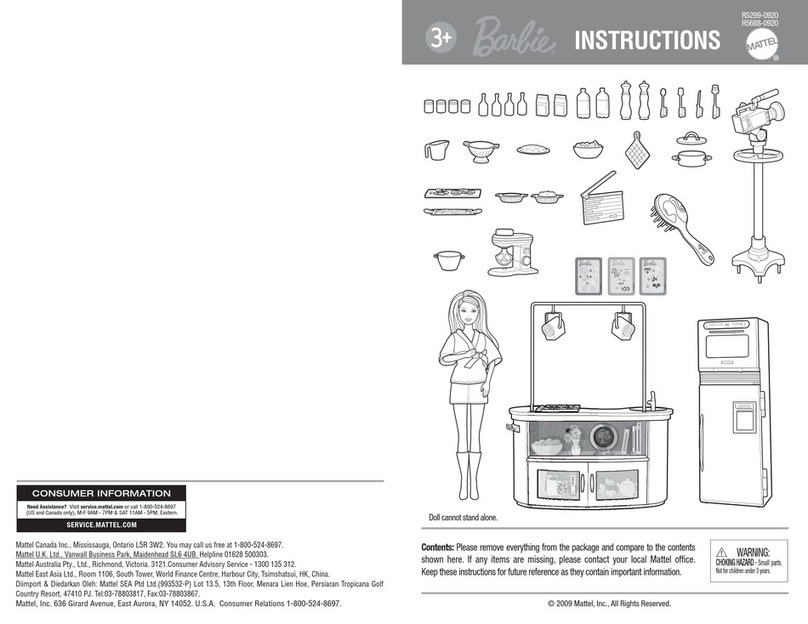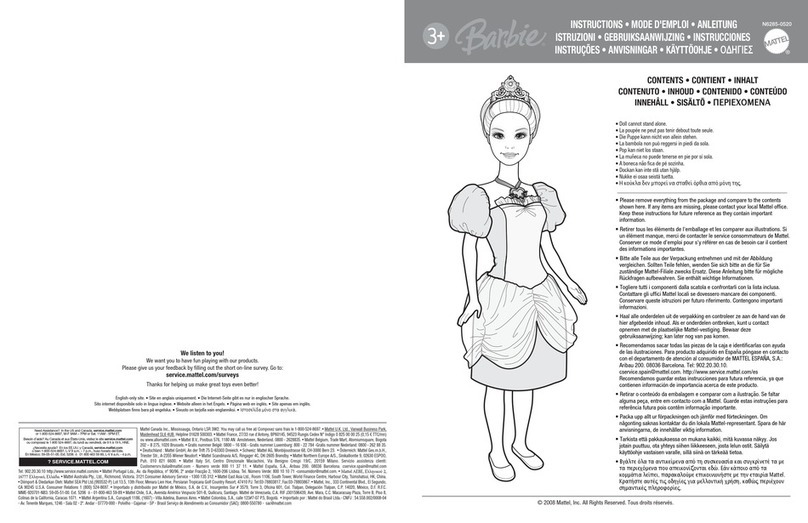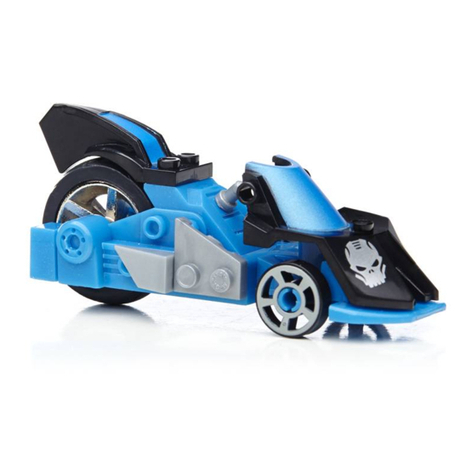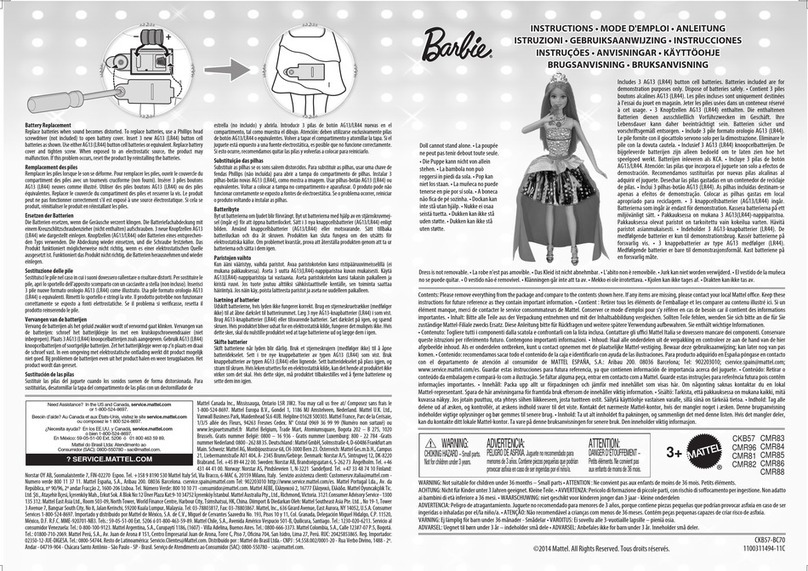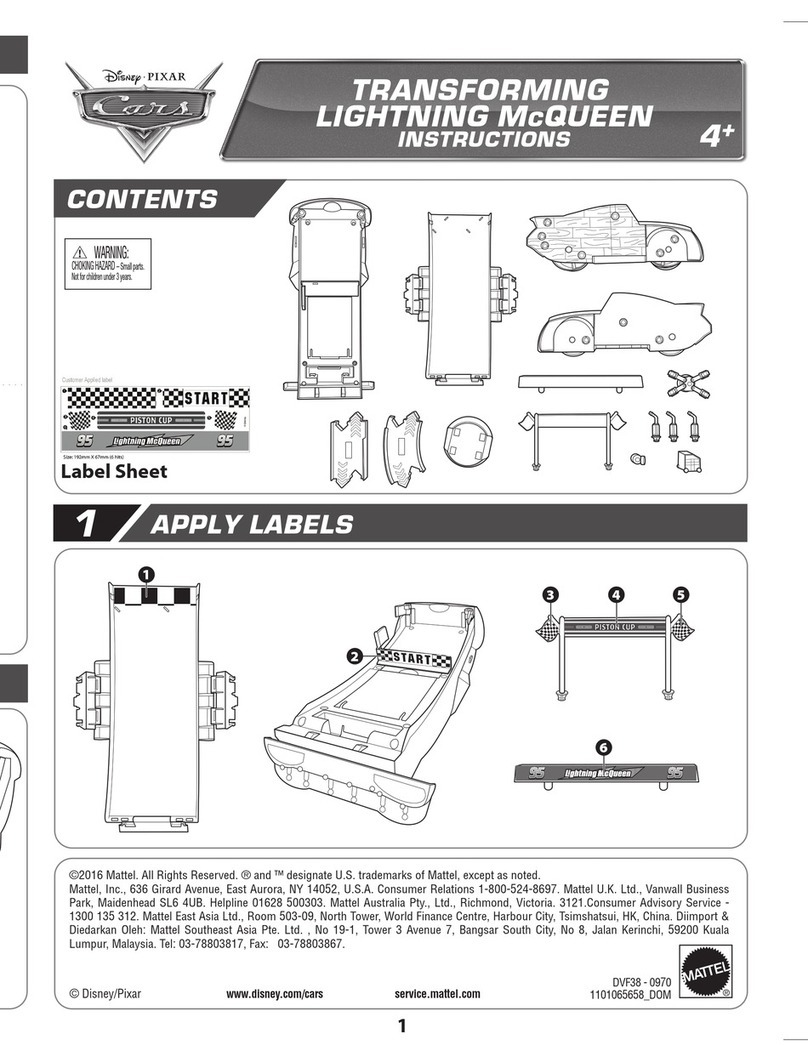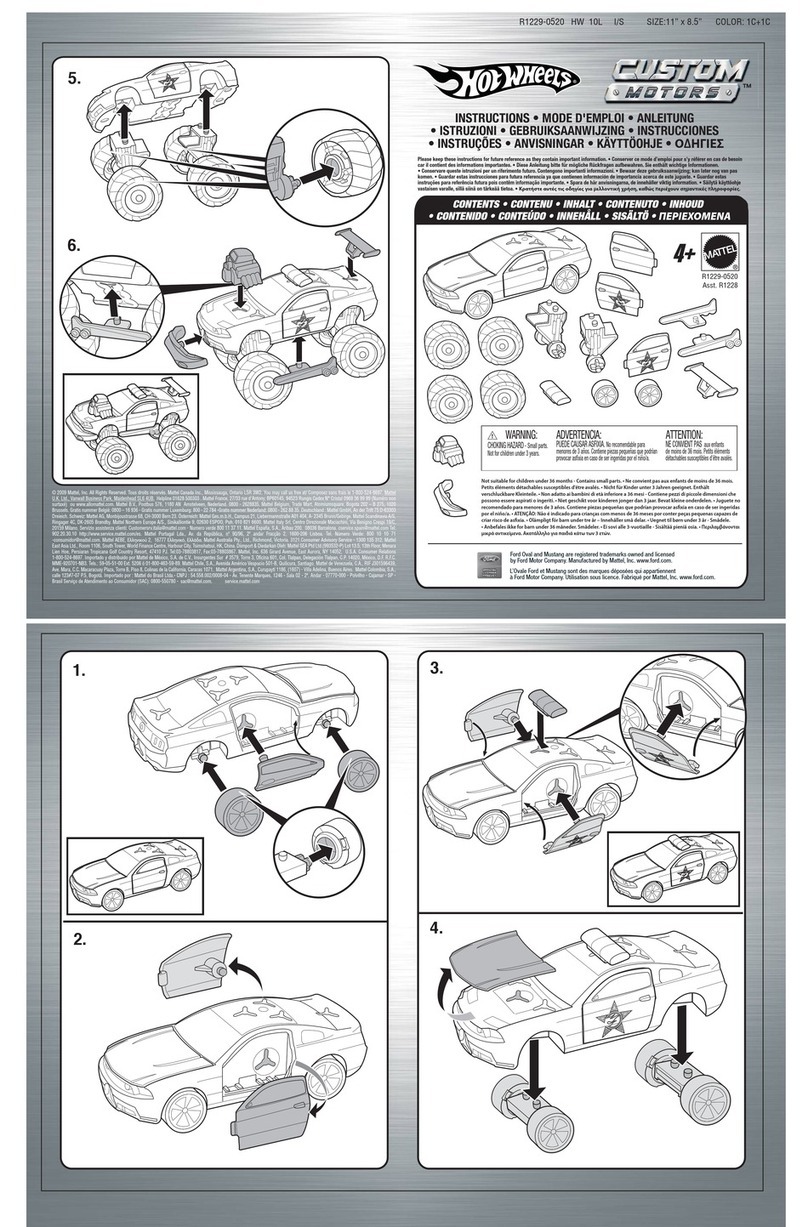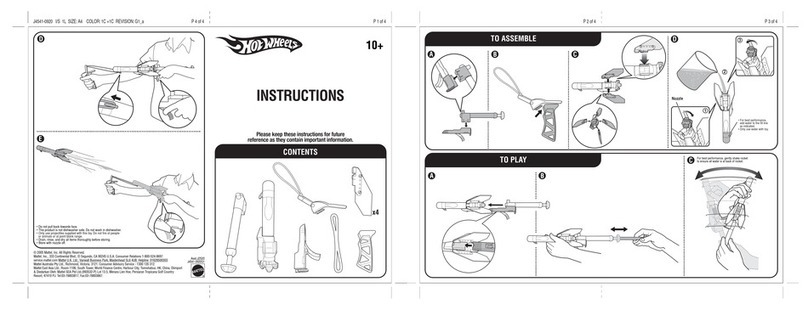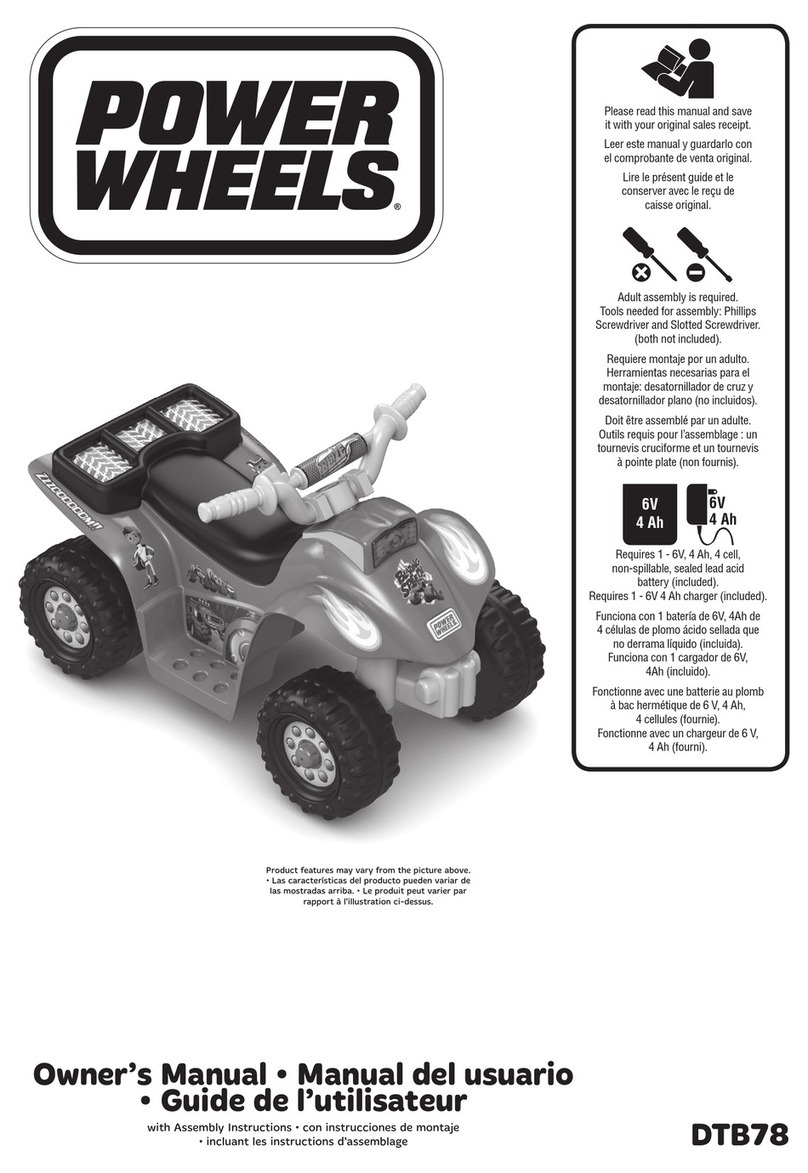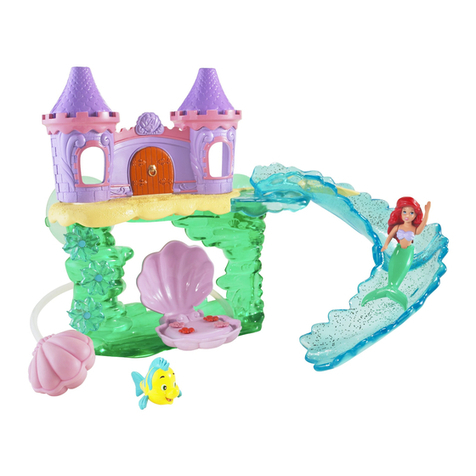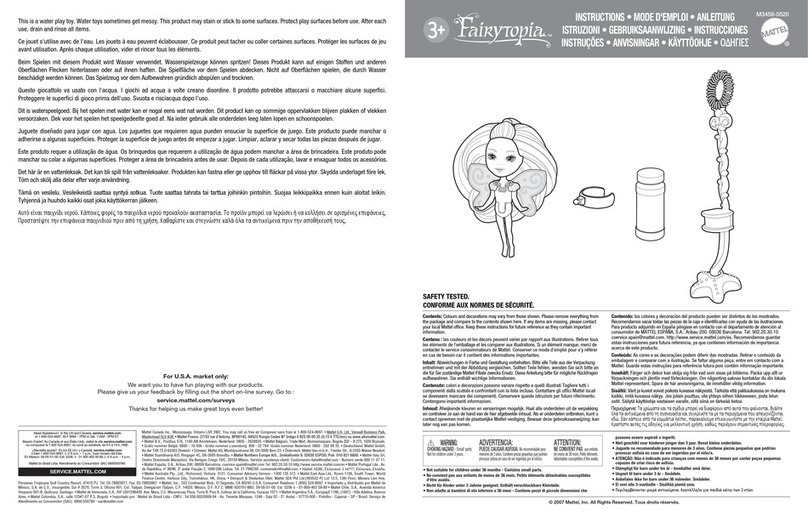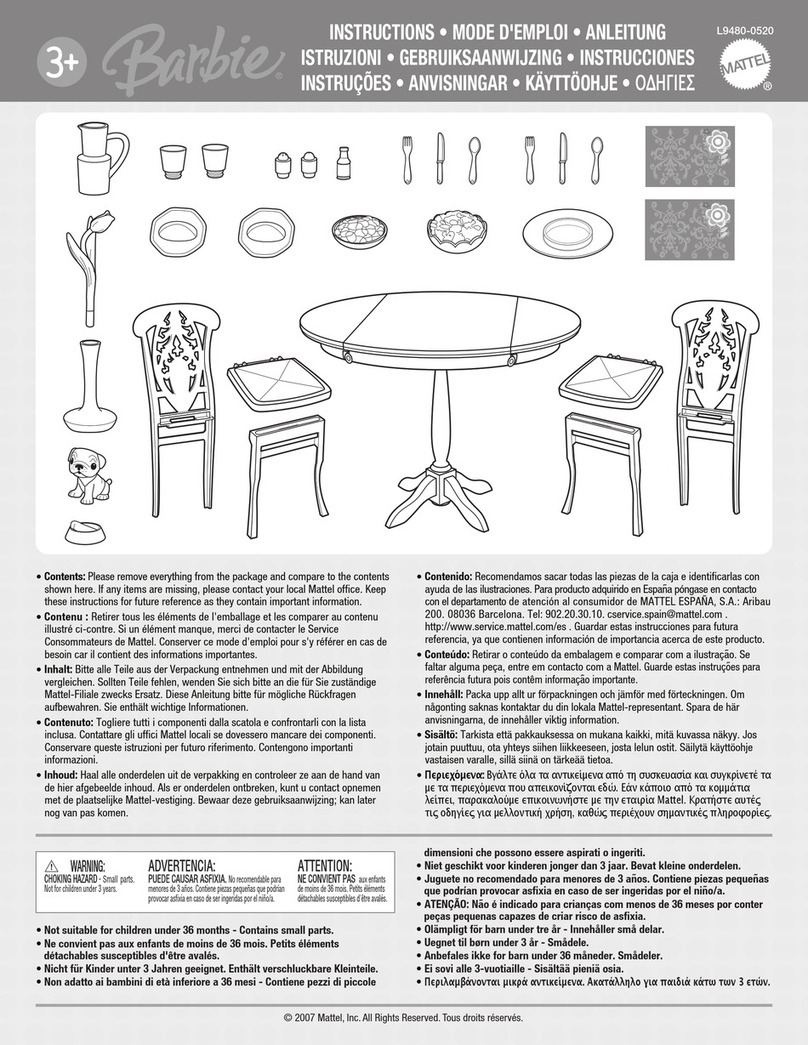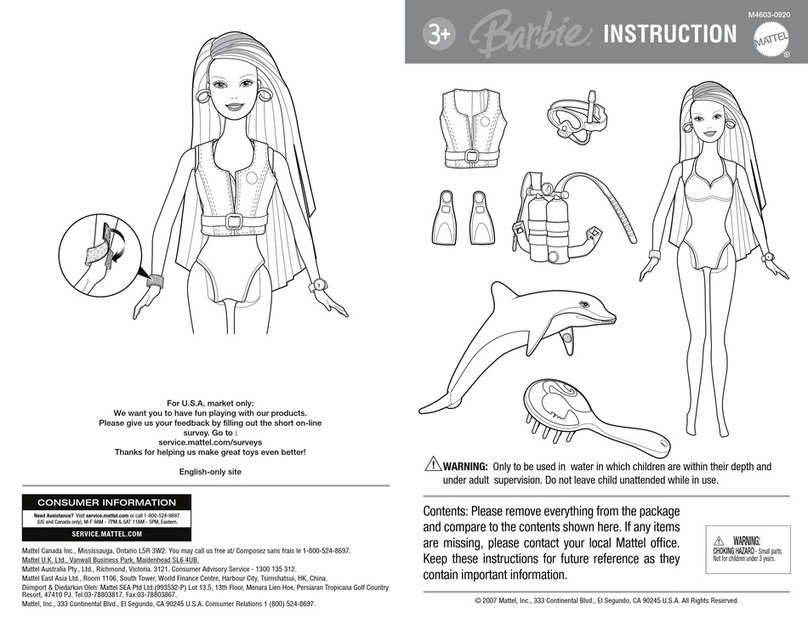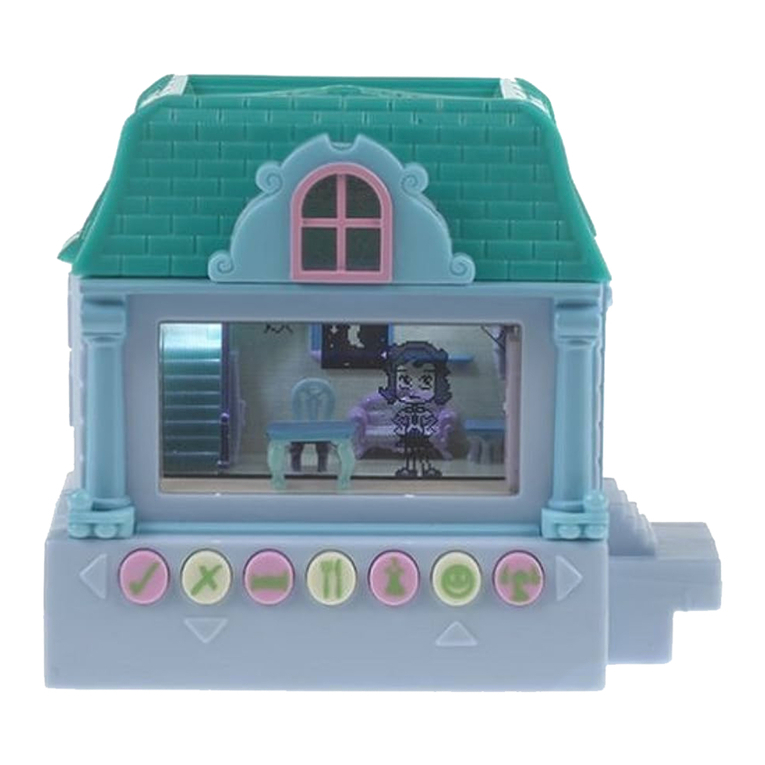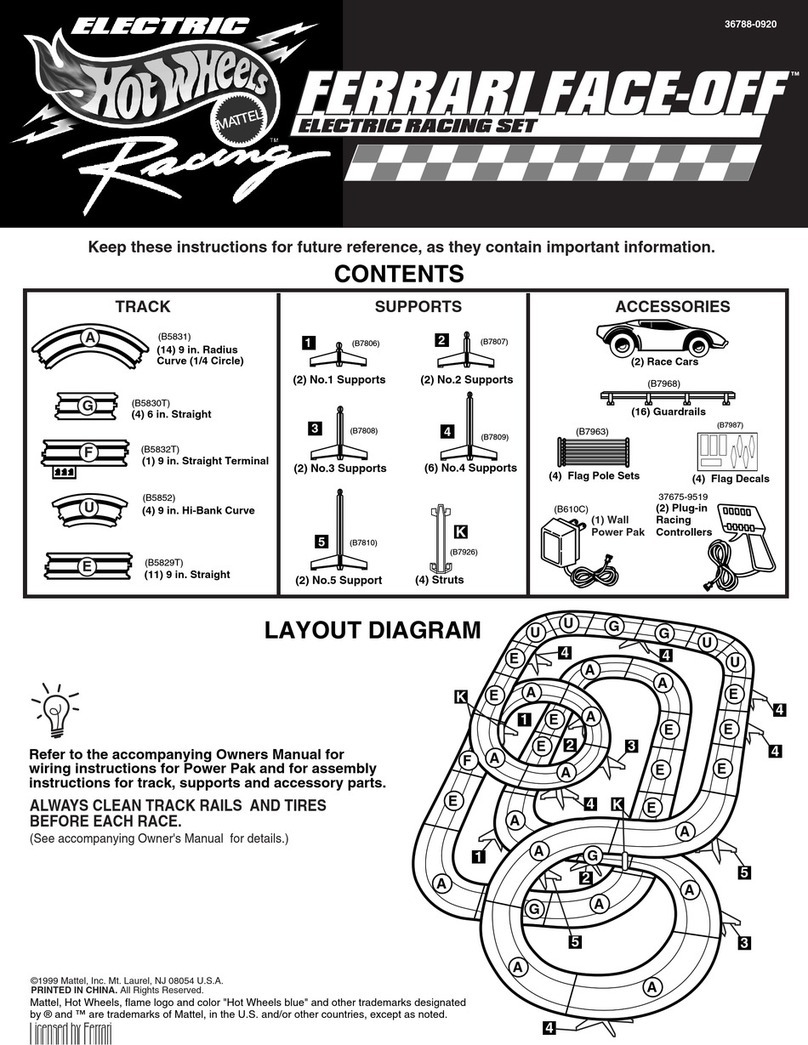1) Pet him, feed him, don’t ever neglect him and you’ll
have one happy Prehistoric Pet on your hands!
2) If you want CruncherTM to talk all the time, put him in
Speak Mode first and then try out his other play
modes. You might be surprised by what you hear!
3) To exit any mode EXCEPT Train and Speak mode, pet
CruncherTM on the head.
4) To take CruncherTM out of Speak Mode, PRESS AND
RELEASE Collar Button 4 and the light will turn off.
5)
To exit Train Mode at anytime, PRESS AND RELEASE
Collar Button 3. Then watch CruncherTM perform his
tricks.
6) If CruncherTM proves to be trouble and you want to
show him who the Master is, just pick him up by the
tail and he will cry like a baby.
7) CruncherTM moves best on smooth, flat surfaces. He
will not run on deep carpets, and stay away from dirt
and other uneven surfaces - he doesn't like them!
8)
CruncherTM has a secret fear of heights, so don’t play
with him on table tops
-
keep him on the ground.
9) CruncherTM can’t swim. In fact he sinks like a brick.
So keep him away from water!
10) Do not let
CruncherTM
go outdoors - it might be the
last time you see him!
TRAINING TIPS
This device complies with Part 15 of the FCC Rules.
Operation is subject to the following two conditions:
(1) This device may not cause harmful interference, and (2) this device must accept any
interference received, including interference that may cause undesired operation.
• This equipment has been tested and found to comply with the limits for a Class B digital
device, pursuant to part 15 of the FCC rules. These limits are designed to provide
reasonable protection against harmful interference in a residential installation. This
equipment generates, uses and can radiate radio frequency energy and, if not installed and
used in accordance with the instructions, may cause harmful interference to radio
communications. However, there is no guarantee that interference will not occur in a
particular installation. If this equipment does cause harmful interference to radio or
television reception, which can be determined by turning the equipment off and on, the user
is encouraged to try to correct the interference by one or more of the following measures:
• Reorient or relocate the receiving antenna.
• Increase the separation between the equipment and receiver.
• Connect the equipment into an outlet on a circuit different from that to which the receiver
is connected.
• Consult the dealer or an experienced radio/TV technician for help.
NOTE: Changes or modifications not expressly approved by the manufacturer responsible
for compliance could void the user’s authority to operate the equipment.
BATTERY SAFETY INFORMATION
In exceptional circumstances batteries may leak fluids that can cause a chemical burn injury
or ruin your product. To avoid battery leakage:
• Non-rechargeable batteries are not to be recharged.
• Rechargeable batteries are to be removed from the product before being charged (if
designed to be removable).
• Rechargeable batteries are only to be charged under adult supervision (if designed to be
removable).
• Do not mix alkaline, standard (carbon-zinc), or rechargeable (nickel-cadmium) batteries.
• Do not mix old and new batteries.
• Only batteries of the same or equivalent type as recommended are to be used.
• Batteries are to be inserted with the correct polarity.
• Exhausted batteries are to be removed from the product.
• The supply terminals are not to be short-circuited.
• Dispose of battery(ies) safely.
• Do not dispose of this product in a fire. The batteries inside may explode or leak.
• Do not connect to more than the recommended number of power supplies.
Protect the environment by not disposing of this product with
household waste (2002/96/EC). Check your local authority
for recycling advice and facilities.
14 15
1514
